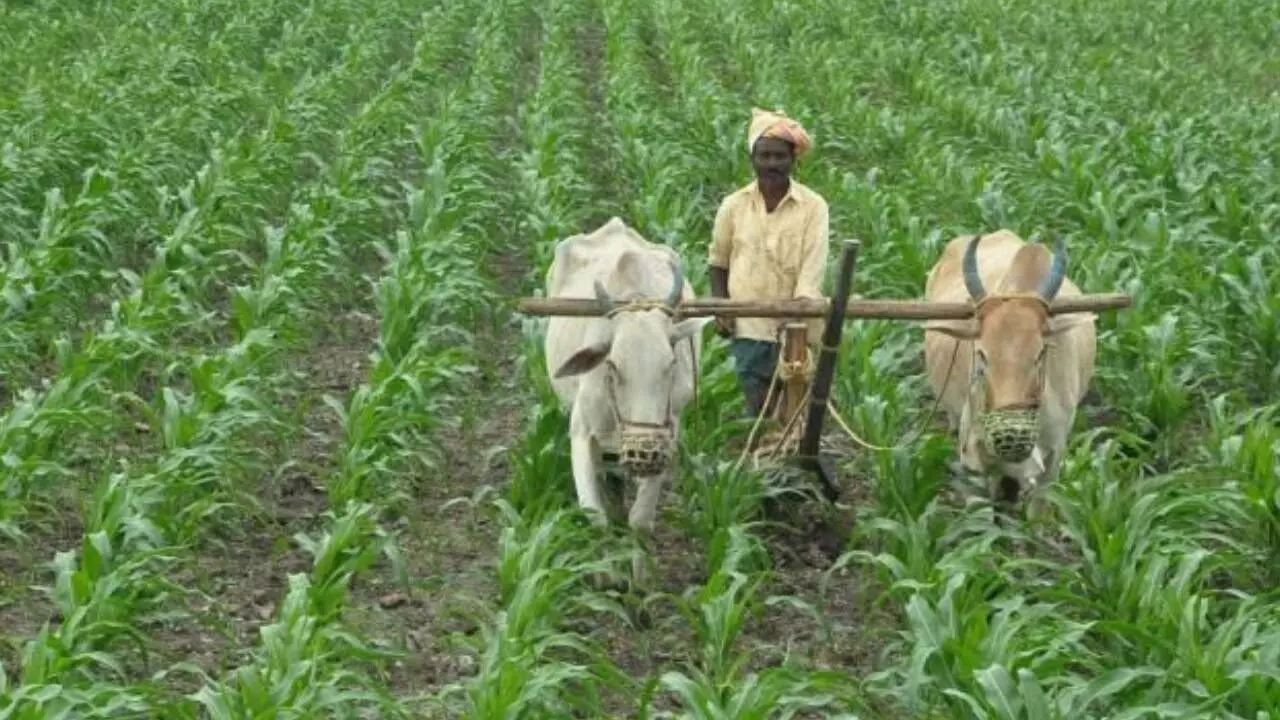Long-lasting distress in agriculture sector doesn’t bode well for the Indian economy
Farm sector has registered a measly upswing of 2% in the first quarter of FY25, down from 3.7% a year-ago; Overall GDP growth also at 15-month low
image for illustrative purpose

The gross domestic product (GDP) numbers for the first quarter of the current fiscal year are out now. These numbers are significant as they are the first for the Indian economy after Narendra Modi assumed charge as the country’s Prime Minister for a third successive term.
But the headline numbers are not encouraging, to say the least. The country’s real GDP hit a slow lane and reached a 15-month low of 6.7 per cent during the April-June 2024 period, which marked the beginning of the financial year 2024-25. That growth was much lower than 8.2-per cent upswing the country clocked in the same quarter a year ago.
Moreover, the GDP growth came at much lower than what the Reserve Bank of India (RBI) projected for this quarter. It forecast a growth rate of 7.1 per cent for April-June 2024 period. But the real number stood at 40 basis points lower.
RBI Governor Shaktikanta Das blamed reduced government spending for this sluggish growth. But there are multiple of other reasons for the country’s economy hitting the slow lane in Q1FY25 from a trailblazing upswing of 7.8 per cent in the preceding quarter, January-March 2024.
The RBI Governor has exuded confidence that despite dip in the first quarter growth, India will clock a full-year growth of 7.2 per cent as projected by the central bank. But some global agencies are not so confident.
Global investment banking major Goldman Sachs cut its forecast for the Indian economy by 20 basis points to 6.7 per cent for 2024 while Bloomberg Economics reduced its projection for FY25 to 6.8 per cent from 7.2 per cent earlier.
However, lower GDP growth this time around doesn’t mean that the Indian economy is struggling across the board. There are some positive takeaways as well. India still continues to be the world’s fastest growing major economy.
China, our nearest competitor and a tricky neighbour, clocked a GDP growth of just 4.7 per cent in the same April-June 2024 period.
This apart, the Indian economy did well in the gross value addition (GVA) space, a more authentic measure of the GDP expansion. In the first quarter, the real GVA expanded by a healthy 6.8 per cent, thanks to a decent performance of the key sectors such as construction and utility services, which clocked 10.5 per cent and 10.4 per cent upswing, respectively. Manufacturing, with a seven per cent growth, also contributed its bit to the GVA expansion. Private investment also saw an uptick.
But on the downside, rural consumption is still a major worry as it’s yet to reach the pre-Covid levels. This is primarily because of lower traction in agriculture. Farm sector registered a measly upswing of two per cent in the first quarter of FY25, down from 3.7 per cent a year-ago period. Of course, the growth was higher sequentially as agriculture clocked a disappointing 0.6 per cent growth during January-March 2024. But the Indian economy needs more contribution from this key sector. And there is a reason for it.
Though the services sector dominates the economy, agriculture still accounts for 16 per cent of the country’s total economic pie. But the main issue is not its contribution to overall economic activity, but to employment generation. A major chunk of the population still lives in rural areas and they mostly rely on agriculture for livelihood and jobs. So, higher agriculture growth means more livelihood opportunities in rural areas.
But for the agriculture sector to grow full swing, the central government should initiate steps that would help farmers get remunerative prices for their produce. This could be done through a legally-guaranteed minimum support price (MSP), and liberal bonuses thereon.
The current scheme of Pradhan Mantri Kisan Samman Nidhi (PM Kisan) under which the central government is giving Rs. 6,000 a year to agriculture land owners is a sheer waste of funds as more than 50 per cent of land owners don’t cultivate, but give their lands on lease for cultivation. Till June, the central government disbursed Rs. 3.24 lakh crore to 11 crore farm land owners under the PM Kisan scheme, which took-off in February 2019. How beneficial this financial assistance is to the farmers is debatable.
Same is the case with farm loan waivers in some States and schemes like Rythu Bandhu in Telangana, which are linked to land ownership. These schemes are primarily enriching land owners, not farmers. That’s the sad part.
However, the agriculture sector will clock decent growth if governments direct their welfare schemes at all the farmers, including tenant farmers who take lands on exorbitant lease rates and cultivate crops. That means that India needs a comprehensive farm policy that benefits the genuine farmers and not the land owners. Remunerative prices for farm produce should be the major part of the new policy initiatives.
Further, the Modi government made a grand announcement in 2016 that it would double farmers’ income within five years, but sadly that is yet to happen. Will farmers flourish at least during Modi 3.0? Hope springs eternal!

